Optimize On-Page SEO: SERanking SPA
Mastering on-Page SEO With SERanking for Single-Page Applications As digital landscapes evolve, the complexity of integrating effective Search Engine Optimization strategies into single-page applications (SPAs) becomes a […]
Mastering on-Page SEO With SERanking for Single-Page Applications
As digital landscapes evolve, the complexity of integrating effective Search Engine Optimization strategies into single-page applications (SPAs) becomes a challenge that cannot be overlooked.
With robust tools like SERanking at the helm, mastering on-page SEO for SPAs transforms from a daunting task to a streamlined process, ensuring your web application engages and retains its target audience.
Through technical finesse and innovative content strategies, one can navigate the intricacies of SPAs and propel their online presence in search engine result pages.
LinkGraph’s SEO services expertly wield SERanking to elevate page quality, enhance user experience, and drive conversions in the ever-competitive digital ecosystem.
Keep reading to unlock the secrets of optimizing your SPA for maximum visibility and performance.
Key Takeaways
- Single-Page Applications Require Specialized SEO Strategies Due to JavaScript Reliance for Content Loading
- SERanking Offers Tools Such as Website Audits and Rank Tracking Tailored to Address SPA-specific SEO Challenges
- Effective SPA SEO Includes Managing Soft 404 Errors, Optimizing Lazy-Loaded Content, and Ensuring Clean URL Structures
- LinkGraph’s SEO Services Employ SERanking to Enhance SPA Visibility in Search Engines and on Social Platforms
- Continuous Monitoring and Adapting to Trends With SERanking Are Essential for Long-Term SEO Success of SPAs
Understanding Single-Page Applications and SEO
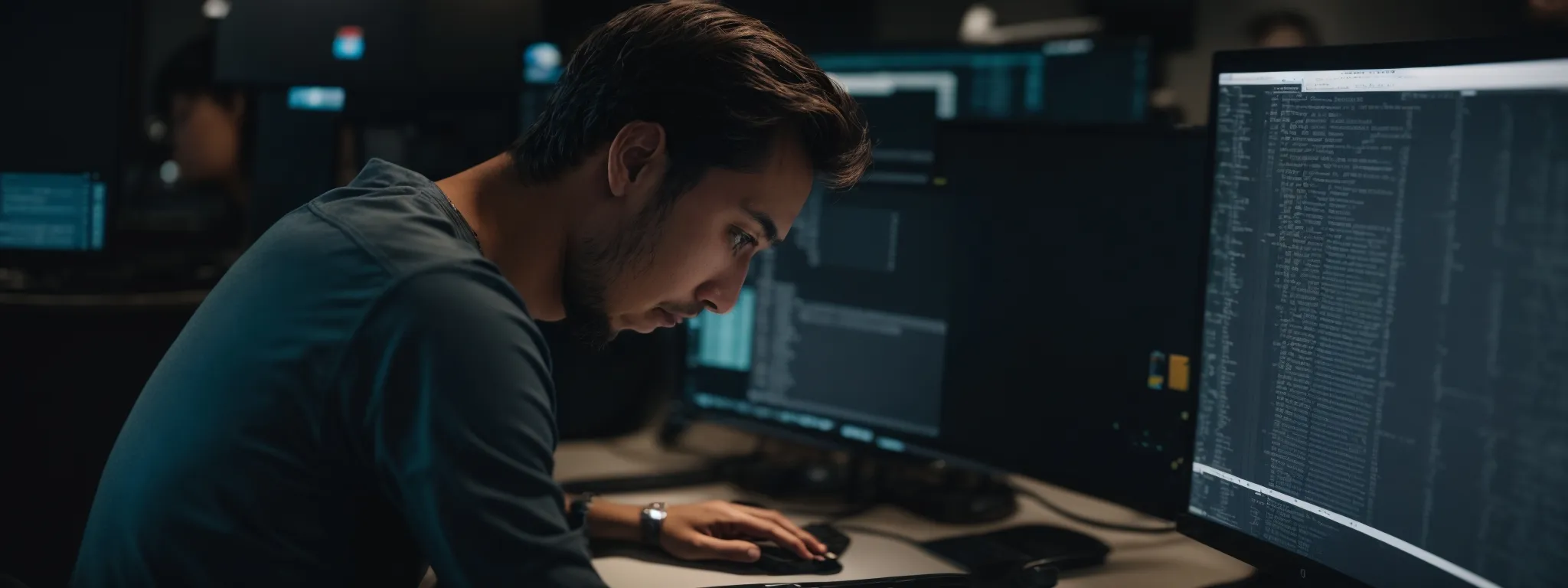
Navigating the complexities of search engine optimization (SEO) for single-page applications (SPAs) is akin to charting a course through a labyrinth, each turn representing a unique challenge that can significantly impact a website’s visibility and user engagement.
Web developers and digital marketers alike need to grasp the intricacies of SPAs—web applications or websites that interact with the user by dynamically rewriting the current web page with new data from the web server, in contrast to the traditional method of loading entirely new pages.
This design approach masses implications not just for the user experience, but also for the SEO strategies that must adapt to the nuances of JavaScript frameworks and their interaction with search engine crawlers.
The hurdles in optimizing SPAs for search engines stem from the core functionality of these applications, which often relies on JavaScript to load content dynamically, a process not inherently search-engine friendly.
Hence, technical acumen and a refined SEO toolkit, such as that provided by SERanking, become instrumental for businesses and SEO professionals aiming to enhance their single-page websites’ search engine visibility without sacrificing the user-centric benefits these applications provide.
Defining a Single-Page Application (SPA)
A Single-Page Application (SPA) is a type of web application or website that offers a seamless user experience by dynamically updating the current page with new content in response to user actions, as opposed to traditional multi-page websites that require a reload for every new page.
SPAs achieve this fluidity by leveraging robust JavaScript frameworks to handle data retrieval and templating, which presents a unique set of indexing challenges for search engines due to the asynchronous nature of content loading:
| Aspect | SPA Characteristic | SEO Consideration |
|---|---|---|
| Content Loading | Dynamically with JavaScript | Indexing by search engines |
| User Experience | Seamless and interactive | Usability signals for ranking |
| Framework Dependency | Heavy reliance on JS frameworks | Compatibility with search engine crawlers |
Why SEO for SPAs Is Uniquely Challenging
Single-Page Applications, while providing a streamlined and interactive user experience, present serious SEO challenges due to their dependency on JavaScript for content rendering. Search engines traditionally crawl and index content that is directly embedded within the HTML of a page, a straightforward process hindered when content is loaded asynchronously as in SPAs.
Given that search engine crawlers may not process JavaScript as efficiently as user browsers, the risk is high for unindexed content and a consequent invisibility in search engine result pages. SEO specialists must therefore employ sophisticated strategies and tools, such as those offered by SERanking, to ensure all dynamic content within SPAs is recognized and appropriately indexed.
The Impact of JavaScript Frameworks on SEO
The ascendance of JavaScript frameworks in SPA development has led to a paradigm shift in optimizing content for search engines, fueling the demand for advanced SEO tactics. These frameworks, though highly effective for creating responsive user interfaces, often generate content on the client-side, which can elude the traditional indexing methods employed by search engines, necessitating SEO insights and methodologies that can traverse this additional layer of complexity.
With SERanking’s refined on-page SEO capabilities, optimizing SPAs becomes less of an insurmountable challenge and more of a structured process. Acknowledging that JavaScript frameworks can generate a lag in content recognition by search engine bots, SERanking fortifies the SEO professional’s arsenal by providing solutions tailored to enhance SPA visibility, ensuring that client-side rendered content achieves the prominence it deserves on search engine result pages.
Leveraging SERanking to Optimize SPAs

In the realm of SEO, the expertise of SERanking emerges as a beacon of clarity specifically for the intricate domain of Single-Page Applications.
As practitioners of search engine optimization align their focus on these dynamic entities, understanding the intrinsic functionality and formulating an efficacious strategy becomes essential.
SERanking extends its robust features to demystify on-page SEO challenges unique to SPAs.
By meticulously setting up the software to cater to a SPA’s distinctive needs and utilizing its key features, SERanking equips SEO professionals with a comprehensive toolkit to ensure that these web applications are not only searchable but stand out in the competitive digital space.
Introduction to SERanking’s Capabilities for SPAs
LinkGraph’s premier on-page SEO capabilities provide a strategic advantage in optimizing Single-Page Applications. The intuitive interface of the SearchAtlas SEO tool enables users to analyze and enhance each aspect of their SPAs, ensuring content is not only detectable but also compelling to search engines.
Through advanced technical insights and diagnostics, SERanking unveils opportunities to elevate a single-page interface’s search engine performance. It diligently addresses the unique SEO requisites of SPAs, delivering a streamlined workflow for professionals to implement swift, impactful changes that resonate with search algorithms.
Setting Up SERanking for a SPA Site
Initiating the optimization of a Single-Page Application With SERanking commences with a thorough setup procedure: configuring the software to cater to the intricacies of dynamic content delivery. This initial phase is critical, ensuring that SERanking’s capabilities are precisely aligned with the SPA’s architecture for optimal indexing and visibility.
- Analyze the SPA’s current SEO performance: Utilize SERanking’s website audit tool to identify on-page issues and optimization opportunities.
- Implement on-page SEO recommendations: Following the analysis, apply SERanking’s insights to enhance meta tags, content, and JavaScript loading efficiencies.
- Monitor and refine: Continuously track keyword rankings and page quality, making adjustments as needed based on SERanking’s comprehensive reports.
With SERanking’s suite of SEO tools, professionals forge ahead, equipping SPAs with the SEO fortitude necessary to meet the stringent criteria of modern search engines. Adopting a meticulous approach ensures every facet of on-page SEO, from the sitemap to schema markup, contributes to improved SERP standings and user engagement.
Key SERanking Features for SPA SEO
Mastering on-page SEO with the SERanking suite of tools critically impacts the success of Single-Page Applications in search engine rankings. The platform offers a comprehensive SEO audit tool that not only scrutinizes the existing setup of a SPA but also delivers actionable insights into improving its search performance.
Efficiency in content optimization is at the core of SERanking’s features, with specific functionalities designed to cater to the unique technical demands of SPAs:
- Real-time monitoring of keyword rankings, offering a granular view of how a SPA’s content performs across different search queries.
- Detailed backlink analysis that assists in crafting a robust off-page SEO strategy by evaluating the quality and relevance of inbound links.
- Competitor analysis to gauge the SEO strategies of similar SPAs, providing a strategic edge in the digital marketplace.
SERanking empowers professionals to implement a tailored SEO strategy that ensures SPAs meet their full potential in user engagement and visibility, capitalizing on their unique architecture to deliver a compelling presence on search engine result pages. Through meticulous optimization of each page element, from meta descriptions to internal linking structures, SERanking sets the stage for SPAs to achieve and maintain high search engine rankings.
Technical SEO Considerations for SPAs

In the quest to perfect search engine optimization for single-page applications, technical SEO assumes a pivotal role.
Crucial to this endeavor are targeted strategies to confront common SPA indexing issues, essentially the methods by which search engines catalogue and rank website content.
Moreover, the implementation of server-side rendering emerges as a critical factor in guaranteeing the discoverability and prompt loading of SPA content, thereby enhancing their appeal to both search engines and users.
Alongside this, overseeing the Navigation and Routing Practices stands as an integral part of the optimization puzzle, ensuring that search engines can efficiently parse and index the intricate architecture of SPAs.
These components form the bedrock of a fortified SEO strategy, integral for SPAs to achieve prominence in a competitive digital ecosystem.
Addressing Common SPA Indexing Issues
Confronting the indexing obstacles of Single-Page Applications begins with precise tuning for search engine consumption. SERanking’s toolset offers advanced diagnostic features, enabling SEO experts to detect and rectify potential barriers that prevent search engines from effectively crawling and indexing SPA-generated content.
Optimization efforts must emphasize enhancing the SPA’s visibility to search engine algorithms through strategic adjustments in code structure and content delivery. SERanking facilitates this critical fine-tuning, ensuring the SPA’s content is rendered and indexed efficiently, thereby securing its rightful place in search engine result pages.
Implementing Server-Side Rendering
Server-side rendering (SSR) crystallizes as a fundamental technique in optimizing Single-Page Applications (SPAs) for search engine visibility. It sidesteps the delayed content rendering associated with client-side JavaScript, instead delivering fully-formed HTML pages directly from the server, ensuring that search engines can crawl and index the SPA’s content without hindrance.
By implementing SSR, developers ensure that the initial page served to the search engine is imbued with the necessary content and structure expected by search bots, thereby ameliorating SPA’s visibility. Integrating SERanking tools to evaluate the efficacy of SSR further empowers SEO experts to validate that server-rendered pages are up to par with SEO best practices:
- Utilization of SERanking to appraise server-rendered HTML for optimization gaps or technical setbacks.
- Continuous monitoring of search engine crawl reports to detect any discrepancies in content indexing.
- Refinement of server-side configurations to bolster page loads and overall SEO performance.
Managing Navigation and Routing for Search Engines
Efficient management of navigation and routing is a cornerstone of enhancing the search engines’ understanding of a Single-Page Application’s structure. By strategically implementing pushState and employing HTML5 history API, SEO experts can guide Googlebot to effectively navigate the SPA’s different sections as distinct pages.
Through the SEO audit tool provided by SERanking, professionals can scrutinize the SPA’s navigational blueprint, ensuring that each virtual “page” serves a clear purpose and contributes to the site’s overall findability in search engine result pages. This inclusion of semantic URLs and navigation optimization ultimately drives the indexing process while enhancing user accessibility.
Content Optimization Strategies in SPAs
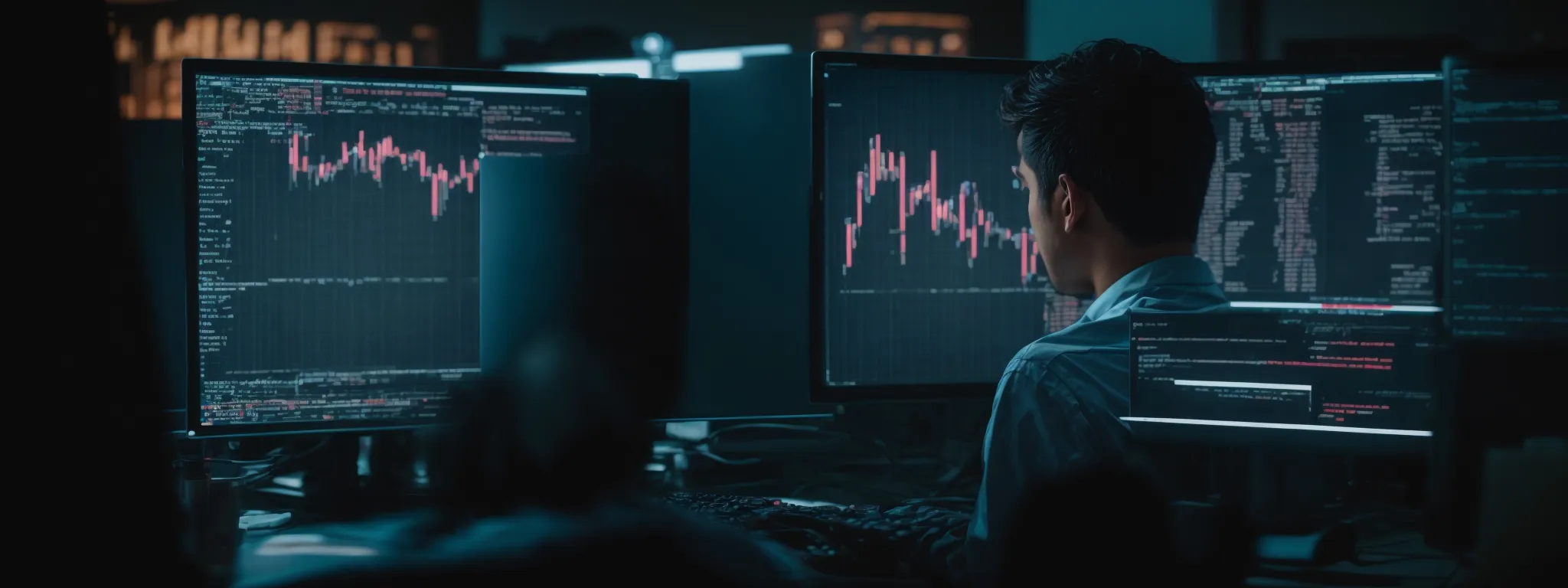
Single-page applications (SPAs) present unique opportunities and challenges for on-page search engine optimization, requiring keen attention to detail and a sophisticated approach to content management.
Effective on-page SEO for SPAs mandates a nuanced strategy that addresses the distinctive structure of these applications, ensuring that each ‘view’ or state of the application is judiciously optimized for maximum visibility.
LinkGraph’s SEO services through SERanking extend a meticulous eye towards crafting compelling meta tags strategically tailored for each SPA view, optimizing content for search engine crawlers, and structuring data to facilitate seamless social sharing.
This approach is grounded in the understanding that comprehensive optimization transcends mere keyword placement, involving a deep alignment with technical nuances and user engagement protocols that define the modern web landscape.
Crafting Effective Meta Tags for Each SPA View
In the landscape of Single-Page Applications, creating effective meta tags for each view or state is paramount to ensuring that content is effectively indexed and presented within search engine results. To this end, LinkGraph’s SEO services employ SERanking to scrutinize and optimize title tags and meta descriptions, tailoring them to align with the user’s search intent and drive click-through rates.
Meta tags serve as concise summaries for each view in an SPA, guiding search engines through the content’s hierarchy and relevance: a critical factor in a page’s click-worthiness and subsequent user engagement. SERanking’s SEO tools facilitate this meticulous process, ensuring that each tag is reflective of core keywords and the unique content of every SPA state.
- Identify key views within the SPA that necessitate distinct meta tags.
- Implement SERanking’s keyword research tools to derive target keywords for each view.
- Optimize title tags and meta descriptions for conciseness, relevance, and user engagement.
- Utilize SERanking’s analysis to refine meta tags, ensuring alignment with SEO content strategy.
- Continuously monitor the performance of each meta tag with respect to search engine rankings and user behavior.
Ensuring Content Visibility to Search Engine Crawlers
Attaining the visibility of content for search engine crawlers is a nuanced task, one that LinkGraph’s SEO services navigate with precision through the application of SERanking insights. Professionals optimize SPAs by ensuring that critical content is loaded within the initial HTML response, thus making it readily crawlable and indexable without the need for search engines to execute JavaScript or wait for subsequent AJAX calls.
LinkGraph’s SEO services also include the augmentation of content visibility through strategic use of SERanking’s keyword research capabilities. By embedding targeted keywords within content that is directly accessible to crawlers, SEO professionals effectively signal search relevance, thereby enhancing the SPA’s presence in search engine results.
Structuring Data for Social Sharing
Ensuring the SPA’s content seamlessly translates into the social media ecosystem forms a crucial aspect of on-page optimization. LinkGraph’s SEO services recognize the importance of structuring data in a way that social platforms can parse and display effectively, enhancing shareability and user engagement across networks.
Open Graph tags and Twitter Cards are fundamental in encapsulating the essence of an SPA’s content for social sharing, prompting LinkGraph’s meticulous integration of these tags through the expertise provided by SERanking’s comprehensive toolset:
- Employing Open Graph protocol to enrich social media excerpts with titles, descriptions, and images that mirror the content’s core message.
- Configuring Twitter Cards to optimize how content is previewed on Twitter, ensuring consistency across different user devices and feeds.
- Regularly updating SERanking’s analysis to oversee the efficacy of social tags and their contribution to engagement metrics.
The result is a multi-faceted approach to content strategy that aligns technical SEO practices with the dynamics of social media interaction, ultimately bolstering the SPA’s digital footprint and audience reach.
Actionable on-Page SEO Tactics With SERanking
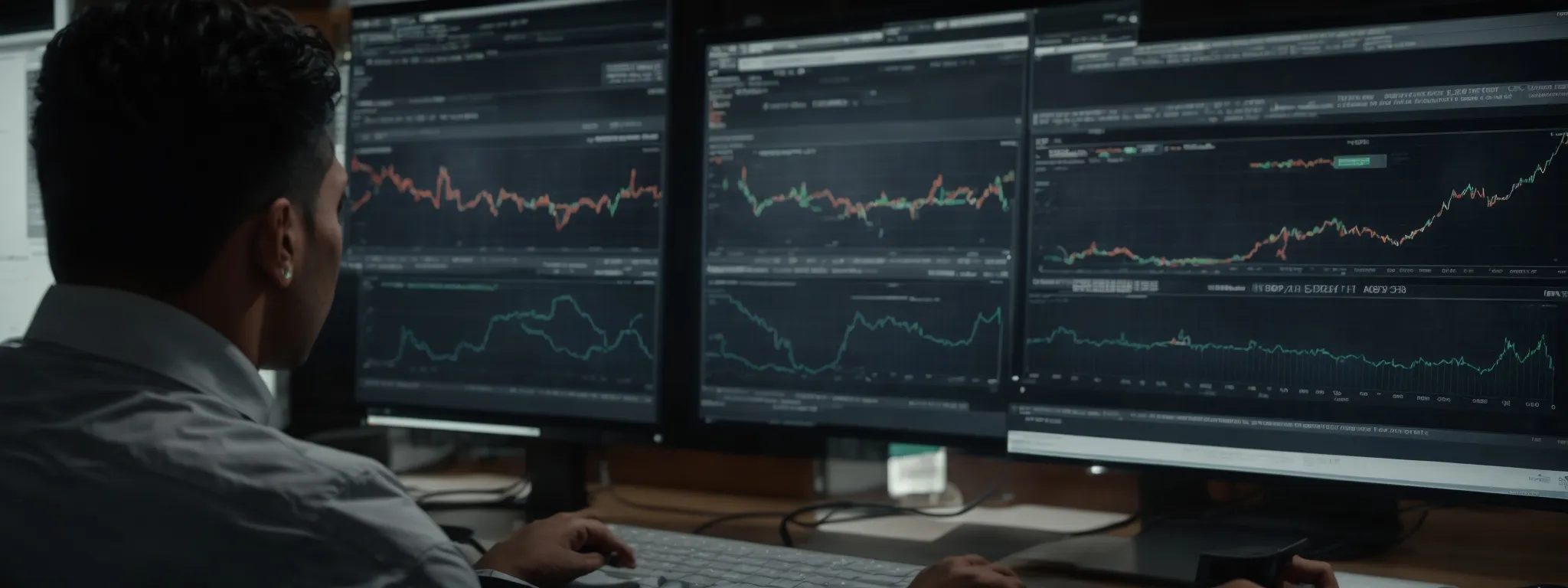
Embarking on the intricate journey of optimizing Single-Page Applications for enhanced visibility demands a tactical approach to on-page SEO.
SERanking emerges as a quintessential ally in this undertaking, offering a suite of sophisticated features designed for real-time monitoring and deep analysis.
SEO professionals are granted the capability to keep abreast of page changes, execute thorough audits for SEO health checks, and decipher the complexities of site structure for continual performance enhancement.
The strategic application of SERanking tools can pivot an SPA from obscurity to prominence, ensuring that every facet of on-page SEO is not only meticulously managed but also resonates with the evolving algorithms of search engines.
Using SERanking’s Page Changes Monitoring
In the swiftly changing landscape of search engine optimization, SERanking’s Page Changes Monitoring emerges as a pivotal tool for ensuring that Single-Page Applications (SPAs) maintain their edge in SERP rankings. By alerting SEO professionals to alterations in on-page elements, this feature enables a prompt and targeted response to any change that could influence search engine visibility.
With an emphasis on precision, SERanking’s monitoring capabilities facilitate the identification of modifications in real-time, from content updates to meta tag tweaks:
| On-Page Element | Type of Change | SEO Impact |
|---|---|---|
| Content | Updates/Additions | Crawler Relevance |
| Title Tag | Revisions | Keyword Optimization |
| Meta Description | Alterations | CTR Potential |
The implementation of such vigilant monitoring is a cornerstone for optimizing user engagement and ensuring that the SEO content strategy aligns harmoniously with search engine criteria and user expectations. This level of surveillance by SERanking thus becomes essential in executing a refined SEO campaign for high-performing SPAs.
Analyzing and Optimizing With SERanking’s Website Audit
An integral component of SERanking’s toolkit is its robust website audit feature, a technological vanguard adept at analyzing the architecture of a Single-Page Application to identify weaknesses in its current SEO implementations. This incisive tool provides a comprehensive report detailing critical areas for improvement, enabling SEO specialists to optimize strategic on-page elements effectively.
Acting on SERanking’s website audit findings ensures that the SPA adheres to industry standards and SEO best practices, strengthening its ability to compete in the digital market space. Critical SEO elements such as page speed, mobile-friendliness, and indexability earn evaluation and enhancement, fostering improved search engine rankings:
- Optimize page loading times to reduce bounce rates and enhance user satisfaction.
- Ensure mobile responsiveness for optimal viewing across various devices.
- Increase content indexability to maximize search engine visibility.
Enhancing SPA Performance With SERanking’s Site Structure Analysis
Steering the performance of Single-Page Applications towards excellence mandates a deep dive into site structure, a task adeptly managed through SERanking’s analytical lens. This tool scrutinizes the organization of SPA elements, shedding light on hierarchical dynamics that influence both search engine understanding and user navigation.
With SERanking’s site structure analysis, SEO experts can distill critical insights into how web pages are interlinked and how content is prioritized, thus enabling strategic enhancements that bolster both search engine crawlability and the end-user experience. This rigorous analysis becomes the linchpin for advancing the SPA’s technical SEO, aligning its architecture with the proclivities of search engine algorithms.
Monitoring and Measuring SPA SEO Success
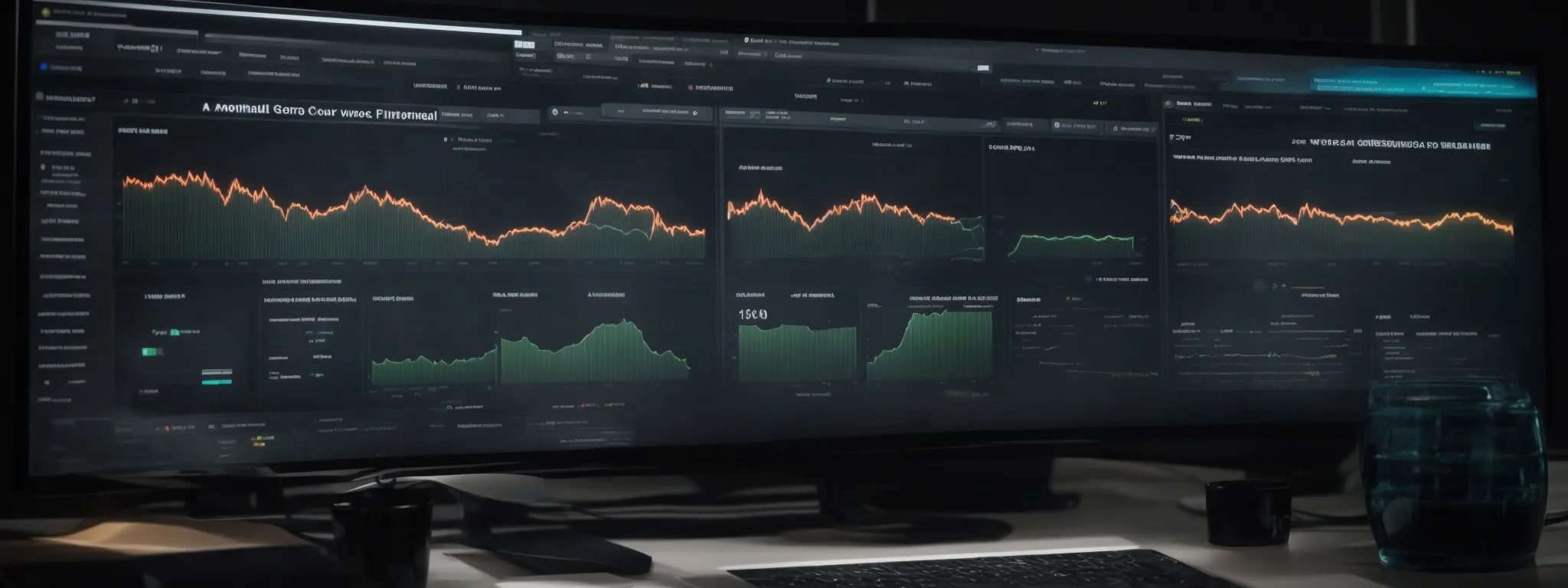
Single-page applications (SPAs) pose a dynamic shift in web development and SEO practices, requiring new methodologies to assess and maximize their on-page SEO efficacy.
SERanking stands at the forefront, offering a comprehensive Rank Tracker alongside a suite of sophisticated analytical tools specifically configured to navigate the intricacies of SPA optimization.
This powerful combination allows SEO professionals to rigorously track key performance indicators, adjust strategies based on concrete data, and solidify the SEO health of their SPAs.
Monitoring SPA metrics becomes a seamless, data-driven process as SERanking translates raw data into actionable insights, empowering decision-makers to fine-tune their search engine strategies to align with evolving digital landscapes.
Utilizing SERanking’s Rank Tracker for SPAs
Employing SERanking’s Rank Tracker for SPAs offers an invaluable perspective on the effectiveness of on-page SEO strategies. It precisely gauges keyword positions in search engine results, offering a clear trajectory of performance over time.
Through comprehensive data, SERanking’s Rank Tracker equips SEO professionals with the ability to pinpoint the impact of their optimization efforts for each unique state within the SPA:
- Inspecting page-specific keyword performance.
- Analyzing trends in search engine rankings.
- Adjusting SEO strategies based on accurate, timely data.
Accurate measurement and continuous monitoring, facilitated by SERanking’s Rank Tracker, establish a strong foundation for enduring SPA visibility and user engagement in the digital realm.
Tracking Key Performance Indicators for SEO Health
In the pursuit of optimized search engine performance, tracking key performance indicators (KPIs) is vital for assessing the SEO health of Single-Page Applications (SPAs). LinkGraph’s SEO services harness the analytical power of SERanking to monitor pivotal KPIs like organic traffic, bounce rate, and conversion rates, closely examining their progression and influence on SPA visibility and engagement.
Establishing a robust SEO framework, SERanking’s tools allow professionals to measure the efficacy of their on-page optimization efforts for SPAs. Closely observing changes in user behavior patterns and keyword effectiveness, LinkGraph’s SEO approach, guided by SERanking data, ensures that strategies are agile and responsive to search engine algorithm updates, maintaining an SPA’s competitive edge.
Adjusting SEO Strategies Based on SERanking Reports
The malleability of an SEO strategy is pivotal for online success, particularly for Single-Page Applications (SPAs) that hinge on dynamic content. SERanking reports offer a profound insight that allows SEO professionals at LinkGraph to refine and adapt their current methodologies, ensuring that strategies remain in lockstep with the evolving algorithms and market trends that dictate search engine rankings.
LinkGraph employs SERanking’s analytical reports to steer SEO tactics toward the most efficacious outcomes, meticulously optimizing the SPA’s on-page elements. Realigned strategies undergo execution informed by SERanking’s data-driven guidance, reflecting an unwavering commitment to bolstering the SPA’s search engine visibility and overall digital footprint.
Overcoming Single-Page Application SEO Pitfalls

Single-Page Applications (SPAs) carry unique SEO intricacies; to navigate these effectively, SEO professionals must exhibit both dexterity and informed decision-making.
Essential to this process is not just proactive strategy formation but also reactive solution deployment to persistent issues such as soft 404 errors, the nuances of lazily loaded content, and the complexities of URL fragmentation.
Mastering on-page SEO with SERanking requires a comprehensive understanding of these common hurdles and executing precise tactics to overcome them, thus ensuring SPAs achieve optimal performance in search engine rankings and user experience.
Avoiding and Remedying Soft 404 Errors
Avoiding and remedying soft 404 errors within Single-Page Applications (SPAs) is an essential task for SEO specialists committed to maintaining search engine credibility. Search engines interpret soft 404 errors as indicators of a non-existent page, which can detract from the user experience and harm a website’s SEO performance due to false content expectations.
Through SERanking’s precise monitoring tools, SEO professionals can swiftly pinpoint and address these errors. They ensure that users and search engine crawlers consistently encounter valid content, reinforcing the SPA’s credibility and relevance in search result rankings:
| Error Type | SEO Challenge | Solution with SERanking |
|---|---|---|
| Soft 404 Errors | Deterioration of search credibility | Identification and correction of false negatives |
| Navigation Continuity | User experience disruption | Ensuring valid paths and content delivery |
Handling Lazily Loaded Content in SPAs
Lazily loaded content in Single-Page Applications can present a unique challenge for SEO, as the content that loads asynchronously may not be immediately accessible to search engine crawlers. Professionals utilize SERanking to ensure that vital content becomes visible to search engines, employing strategies that hint to crawlers about the presence of additional content beyond the initial load.
Adapting SPA infrastructure to support lazily loaded content while maintaining SEO integrity involves techniques such as progressive enhancement, which SERanking’s analytics aid in optimizing. This not only ensures that content is indexed despite its deferred loading but also enhances the page’s ability to capture and retain user engagement, a critical metric in the purview of search engines.
Tackling URL Fragmentation in SPA Setups
Addressing URL fragmentation is indispensable for SPA optimization, as it deals with the proper structuring and consistency of URLs that search engine crawlers use to index and rank pages. Without diligent management, SPAs risk presenting fragmented or illogical URLs that impede user and crawler navigation, potentially diminishing search engine visibility.
The strategic coherence of URL paths in Single-Page Applications is paramount, ensuring that each client-side state change reflects a URL that is both logical to users and comprehensible to search engines. SERanking assists in establishing and maintaining clean, user-friendly URL structures that facilitate efficient crawling and indexing:
| URL Issue in SPAs | Relevance to SEO | Resolution via SERanking |
|---|---|---|
| Fragmented URLs | Hampers indexability and user experience | Refinement of URL architecture for clarity |
| Inconsistent URL mapping | Causes confusion for search engines and users | Optimization of client-side routing mechanisms |
Integrating Analytics and SEO for SPAs
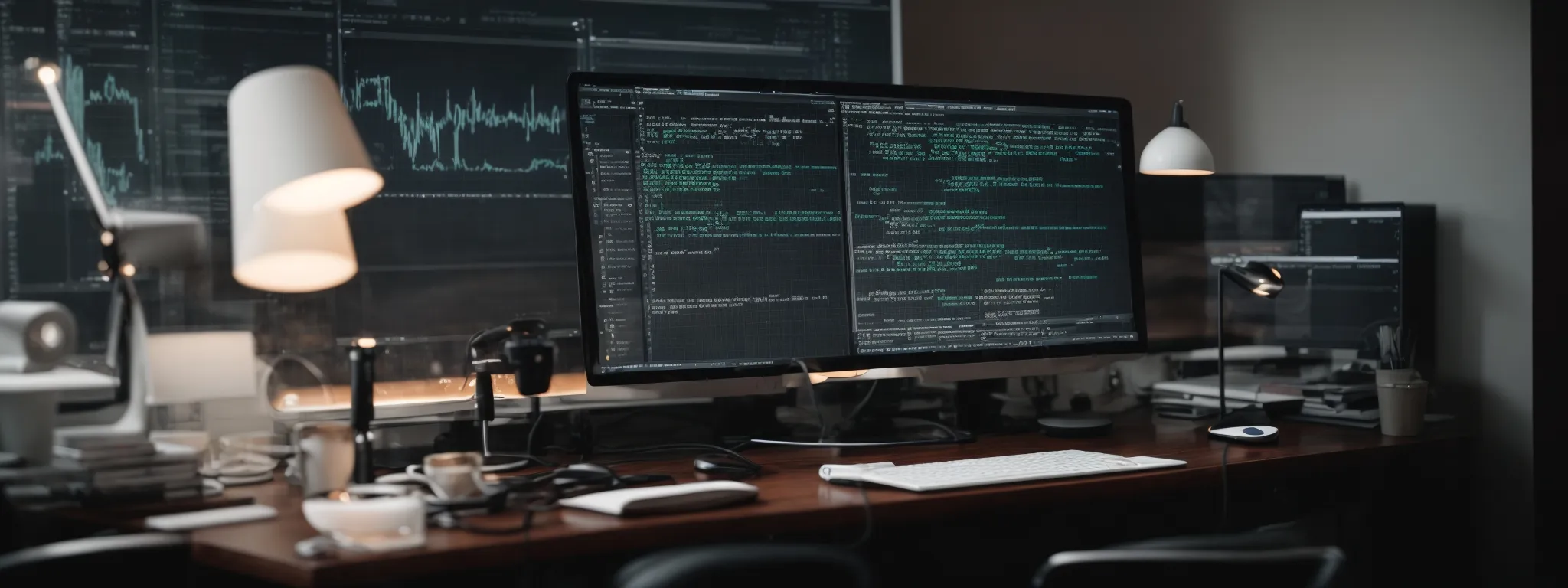
The digital terrain of Single-Page Applications (SPAs) poses an intricate matrix of opportunities for SEO professionals who strive for excellence in page optimization and user engagement.
SERanking stands out as an indispensable tool, weaving together analytics and on-page SEO to form a cohesive narrative of a website’s performance.
Its robust capabilities allow for advanced tracking of user behavior, offering a foundation to make informed, data-driven SEO decisions.
As organizations seek to understand the intricacies of their online presence, SERanking provides the precision and depth required to steer SPAs toward outstanding search engine results and a superior user experience.
Using SERanking to Bridge SEO and Analytics Data
In the realm of Single-Page Applications, SERanking emerges as a pivotal instrument, adept at synthesizing data from disparate origins to construct a unified SEO strategy. Its analytical prowess enables SEO specialists to discern patterns in user behaviors and preferences, directly informing on-page optimizations and content strategies to enhance search visibility and user engagement.
With SERanking, professionals have access to a comprehensive view of performance metrics that bridge the gap between traditional SEO and user analytics. This integration facilitates a deeper understanding of audience interaction with SPAs, propelling data-driven decisions that fine-tune on-page elements for improved organic reach and user retention.
Advanced Tracking for User Behavior on SPAs
Through the insightful deployment of SERanking’s tracking technology, SEO professionals delicately map user interactions within Single-Page Applications. This endeavor is critical as it reveals the navigation patterns, dwell times, and engagement hotspots across the application, allowing for a targeted and user-focused SEO strategy.
Capitalize on SERanking’s analytical tools, experts gain a clear reading on the pulse of SPA performance, closely monitoring metrics such as click-through rates and conversion paths. These insights are indispensable, driving the ongoing refinement of content and layout to resonate profoundly with the intended audience, thereby enhancing Search Engine Optimization for SPAs.
Making Data-Driven SEO Decisions With SERanking Insights
SEranking’s insights serve as the compass for navigating the SEO terrain of Single-Page Applications, providing key performance indicators that inform impactful optimization decisions. The platform’s analytics distill complex data, allowing SEO professionals at LinkGraph to strategize with precision, deliberately shaping on-page elements to align with current trends and search engine algorithms.
Consequently, LinkGraph’s utilization of SERanking’s deep analytical insights ensures a marriage between site analytics and SEO strategy, fostering an environment where data reigns supreme. This methodical application of SERanking’s intelligence equips professionals with the ability to pinpoint areas ripe for SEO enhancement, leading to data-backed decisions that drive search visibility and user engagement for SPAs to unprecedented levels.
Crafting a Future-Proof SPA SEO Strategy
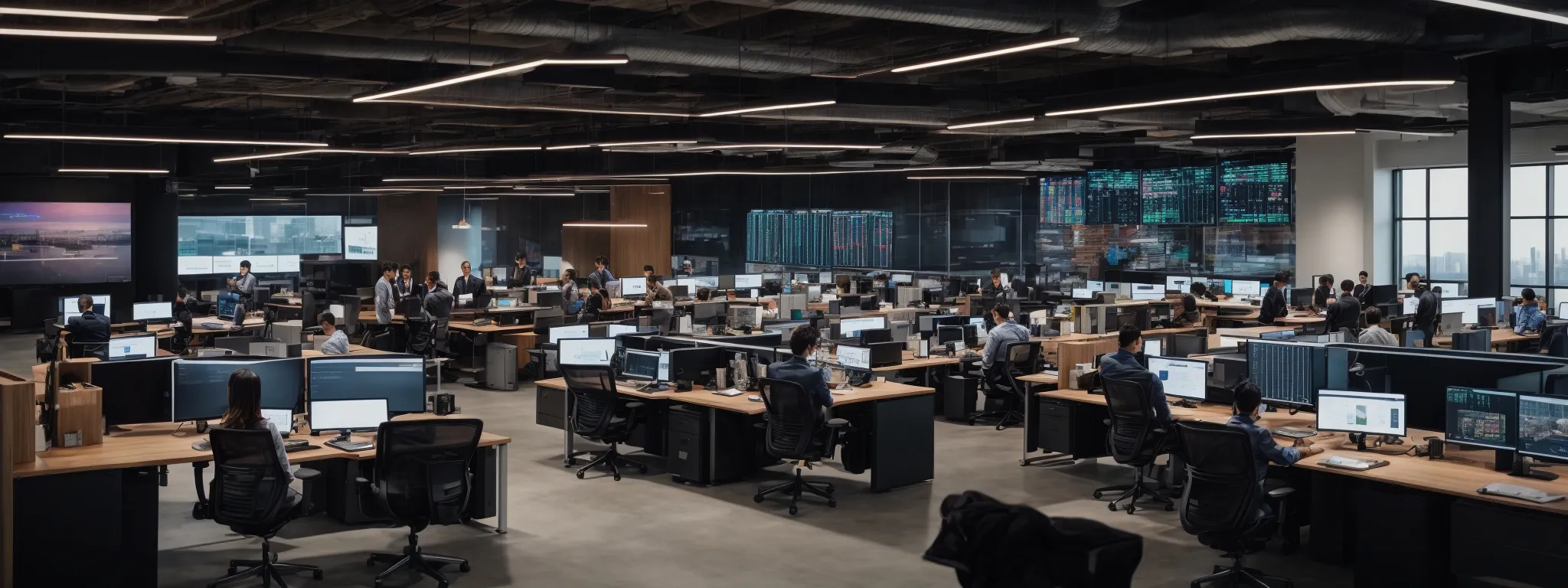
In an era where technological evolution is relentless, the distinction between merely surviving and truly thriving in the digital space hinges on one’s mastery of on-page SEO.
Rigorous optimization of Single-Page Applications (SPAs) demands not only an adept application of current best practices but also foresight and adaptability to embrace the emergent SEO shifts on the horizon.
SERanking occupies a pivotal role in this endeavor, offering an array of SEO tips and real-time updates that professionals wield to stay ahead.
The insights gleaned from SERanking enable strategists to foresee and integrate burgeoning SEO trends, shaping a robust and adaptable approach essential for securing enduring success for SPAs in the competitive search landscape.
Staying Ahead With SERanking’s SEO Tips and Updates
Embracing SERanking’s stream of SEO tips and updates equips professionals with the foresight to navigate the ever-evolving landscape of search engine algorithms. LinkGraph’s commitment to SEO excellence involves a strategic application of SERanking, ensuring that SPA optimization strategies are consistently informed by the latest industry insights and search engine advancements.
LinkGraph harnesses SERanking’s continual updates to refine and advance on-page SEO for Single-Page Applications, steering them towards sustainable visibility and competitive advantage. This proactive stance not only fortifies existing SEO efforts but also primes SPAs for future algorithmic shifts, securing their relevance and prominence in search engine result pages.
Predicting SEO Trends and Adapting SPA Strategies Accordingly
Forecasting the future state of SEO requires a keen eye on the developments within technology and user behavior patterns: A task for which SERanking is particularly well-suited. LinkGraph’s SEO services, utilizing SERanking’s comprehensive tools, enable the anticipation of trends such as voice search optimization and artificial intelligence in search algorithms, laying the groundwork for adaptable SEO strategies within Single-Page Applications (SPAs).
- Evaluating emerging technologies and potential impact on SEO practices.
- Investigating user search behavior shifts to preemptively adjust content strategy.
- Incorporating predictive analytics to tailor SPA frameworks for future SEO requirements.
By integrating these predictive insights, LinkGraph transforms SPAs into agile entities responsive to the search engines of tomorrow. Adapting to trends like mobile-first indexing and increased focus on user experience, LinkGraph ensures SPAs are optimized not just for present visibility, but also primed for future evolution within the digital landscape.
Achieving Sustained SEO Success for Your SPA
Achieving sustained SEO success for Single-Page Applications calls for a vigorous adoption of SERanking’s agile capabilities, ensuring that strategic on-page optimizations retain their potency over time. LinkGraph’s SEO services leverage SERanking to perpetuate a SPA’s elevated positioning, employing proactive enhancements, and vigilant monitoring to persist against the ever-shifting search landscape.
LinkGraph’s dedication to cultivating long-term search engine optimization achievements for SPAs centers on the integration of SERanking’s insightful analytics and adaptive features. This commitment to continuous adaptation fosters an environment where SPAs not only rise to the top of SERP but remain there, benefiting from durable, SEO-infused prominence amidst digital competitors.
Conclusion
Mastering on-page SEO for Single-Page Applications (SPAs) is essential, and SERanking provides the tools necessary to tackle unique optimization challenges.
With features designed for real-time monitoring, website audits, and site structure analysis, SERanking enables SEO professionals to effectively adapt to search engines’ dynamic indexing methods, maximizing visibility and user engagement.
Its capabilities offer insightful data to refine strategies, monitor performance, and anticipate future SEO trends, ensuring that SPAs remain competitive and high-performing in the constantly evolving digital landscape.















































































